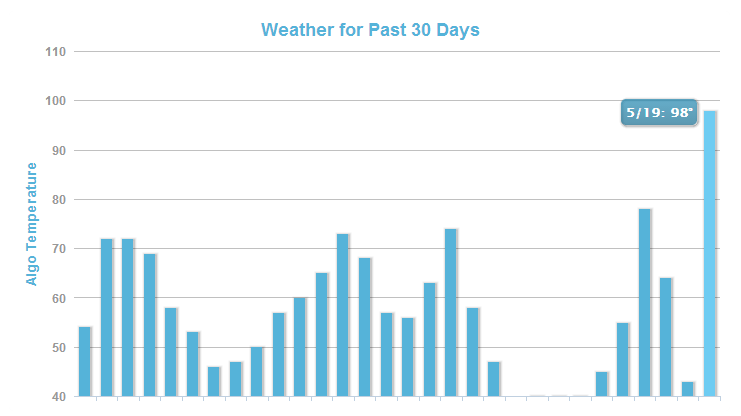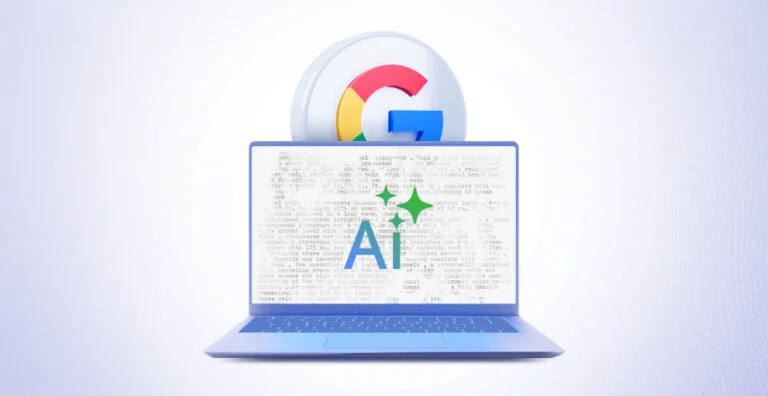How to Structure Content That Ranks in AI Overviews

As Google’s AI Overview reshapes the top of the SERP, content strategy is entering a new era. These zero-click summaries aim to give users fast, AI-generated answers—often without them clicking through to a website. That means if your content isn’t structured properly or lacks clear, concise information, it risks being skipped over entirely.
To optimize for Google AI Overviews, brands need to shift from simply writing for people to writing for both people and machines. The formula? Combine structured data for SEO with well-formatted, answer-first content that feeds directly into how generative search works.
Here’s how to do it.
1. Use Structured Data to Signal Relevance
Structured data helps search engines understand your content in a way that HTML alone can’t. Think of it as a layer of clarity—semantic cues that tell Google, “Hey, this section is a recipe,” or “This is an FAQ.” That context boosts your odds of being cited in AI search snippets Google favors.
Structured data works hand in hand with AI search. According to Google, it uses this markup to power results like rich snippets and knowledge panels, and it’s likely playing a key role in AI Overviews as well.
Add Schema Types for Specific Use Cases
To maximize your visibility, use schema types that match your content.
For example:
- Use HowTo for tutorials or guides
- FAQ for question-based pages
- Product for e-commerce items
- Article for blogs and news
This alignment can help surface your content when Google compiles what type of content shows in AI overviews.
Stick to JSON-LD Format and Test Frequently
JSON-LD (JavaScript Object Notation for Linked Data) is Google’s preferred structured data format. It allows you to add schema markup without messing up your HTML and is easier to maintain.
You can also test your pages regularly with tools like Google’s Rich Result Test or Schema validator to catch any errors. Remember, when you’re aiming for schema markup for AI overviews, accuracy is paramount.
2. Write Concise, Snippet-Worthy Answers
Being cited in AI Overviews doesn’t just depend on code, it hinges on your content’s clarity. Google’s AI systems are more likely to pull content that’s direct, concise, and semantically structured.
A report by SEMrush suggested that the average length of a featured snippet is just 40-50 words. In AI Overviews, that word count might be even shorter. If you want your content to be selected, you need to write concise content AI-generated results—no fluff, no filler.
Lead with the Answer
Get to the point, fast. Place your main answers or summary in the first one or two sentences of a section. This makes it easier for Google to parse and increase your odds of inclusion.
Use Bullet Points, Short Paragraphs, and Simple Language
AI and users alike benefit from clear formatting. Make sure to use the following:
- Bullet points for lists
- Short paragraphs (2-3 sentences max)
- Simple, direct language
This kind of answer formatting for AI search ensures your content is both scannable and digestible.
3. Match Content Structure to Search Intent
It’s not just about how you format your content, it’s what you format. To rank well, align your structure with user intent.
Use SERP analysis to map intent categories: Is the query informational, navigational, or transactional? Tools like SEMrush or Ahrefs can help you break this down. For example, an “informational” query might benefit from an FAQ structure, while a “how to” query needs a clear, step-by-step format.
Understanding Google AI Overviews vs traditional snippets can also help you anticipate formatting: while snippets pull short phrases, Overviews often draw from multiple sources and paragraphs.
4. Make Pages Easy to Parse
Generative AI doesn’t “read” like a human, instead it parses content based on cues.
What to use to make pages easy to parse?
- Logical heading hierarchy (H1 > H2 > H3)
- Internal jump links (anchor tags)
- Tables for data
- VIsual hierarchy (bolding, spacing)
5. Support Credibility with On-Page Signals
Google’s AI isn’t just looking for clarity, it’s looking for trust. To earn a spot in an AI Overview, your content should demonstrate credibility through:
- Author bios and credentials
- Source citations and outbound links
- Internal linking to relevant content
- Credible schema types like Organization or Person
These cues help AI weigh your authority, and it’s a subtle but key part of SEO for AI Overviews.
Important to know: Don’t overlook schema types like Person or Organization to validate authorship and brand authority. These on-page elements don’t just build trust with readers, they also support what Google refers to as E-E-A-T (Experience, Expertise, Authoritativeness, and Trustworthiness), a key consideration in both traditional rankings and AI-generated results.
6. Include Visuals to Strengthen Your AI Overview Presence
Part of structuring content is diversifying how your information is presented. AI-driven search doesn’t just process text, it’s becoming more multimodal, meaning it can interpret and connect information from different formats, such as text, images, and video.
Google’s BERT model (Bidirectional Encoder Representations from Transformers) was built to understand natural language in context, and newer AI systems layer this with multimodal capabilities. This means visuals aren’t just “decoration”, they can help AI better understand and validate your content.
Well-chosen visuals can:
- Make complex information easier to digest
- Provide additional context that reinforces your written points
- Increase engagement and time on page, which may signal quality to Google
To maximize their impact:
- Use descriptive alt text that aligns with your topic
- Add captions or brief explanations for context
- Where relevant, embed short videos or diagrams to demonstrate processes or examples
The goal isn’t to overload your page with media, but to make it more comprehensive and user-friendly. AI Overview systems are designed to pull the most helpful, well-structured content, and that often includes strong visual elements.
Put Structure to Work—And Let Google Notice

Winning in AI Overviews isn’t just about playing the algorithm, it’s about playing the long game. That means crafting that’s clear, well-marked, and helpful to both humans and search engines.
At Truelogic, we help brands stay ahead of algorithm shifts—not by chasing trends, but by building strategic clarity into every piece of content. If you’re wondering how to appear in Google AI Overviews, start with structure, lead with value, and let your content do the talking.
Need help structuring your content for better AI visibility? Let’s talk.









